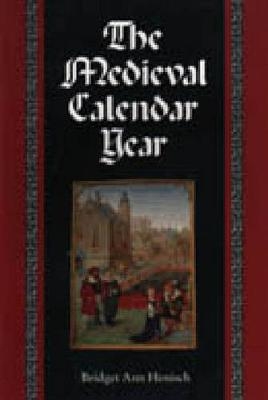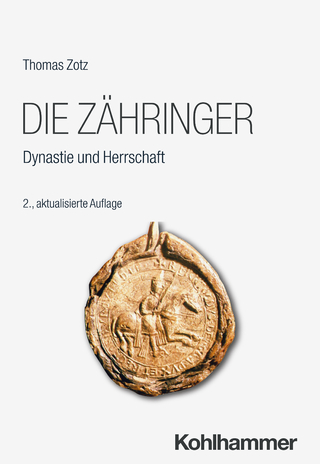
The Medieval Calendar Year
Seiten
1999
Pennsylvania State University Press (Verlag)
978-0-271-01903-1 (ISBN)
Pennsylvania State University Press (Verlag)
978-0-271-01903-1 (ISBN)
- Titel ist leider vergriffen;
keine Neuauflage - Artikel merken
A celebration of the pictorial convention known as "The Labours of the Months" and the ways it was used in the Middle Ages. It provides insights into prevailing social attitudes and values of the culture of medieval Europe.
The Medieval Calendar Year celebrates the pictorial convention known as "The Labors of the Months" and the ways it was used in the Middle Ages. Richly illustrated and elegantly presented, it provides valuable insights into prevailing social attitudes and values and will fascinate all readers who are interested in the history and culture of medieval Europe.
The "Labors" cycle was most popular during the High Middle Ages (ca. 1200–1500). The traditional cycle depicts the year as a round of seasonal activities on the land. Each month has its allotted task, and each of these represents one stage in the never-ending process of providing food for society. The small scenes that made up the cycle were well-known and used widely throughout Europe. They were chosen to decorate both public and private spaces: churches and houses, town fountains, baptismal fonts, as well as books of devotion intended both for priests and for the laity. The cycle was sculpted in stone, carved in wood, painted on glass and on manuscript pages. Examples from such media are described, but most of the illustrations have been taken from manuscripts, primarily Books of Hours.
The author has spent the past fifteen years studying calendar after calendar, and one of her great strengths is her ability to see the social reality that lies hidden, even masked, behind the stylized presentation. In the chapter on winter, she shows how the image of this season, dreaded in the Middle Ages, was softened and sweetened by calendar artists to bring it more into harmony with the characteristic mood of the cycle as a whole. For autumn, she reveals how depictions of the harvest of grain, grapes, and livestock hint at a sophisticated market economy. Thematic chapters on children, women, and the hardship of work brilliantly cut through idealized conventions and assumptions to unveil the underlying complexities of life.
The "Labors" cycle and its social context have not hitherto been examined in depth and with the care they deserve. The Medieval Calendar Year is a book worthy of the beautiful and beguiling tradition it describes.
The Medieval Calendar Year celebrates the pictorial convention known as "The Labors of the Months" and the ways it was used in the Middle Ages. Richly illustrated and elegantly presented, it provides valuable insights into prevailing social attitudes and values and will fascinate all readers who are interested in the history and culture of medieval Europe.
The "Labors" cycle was most popular during the High Middle Ages (ca. 1200–1500). The traditional cycle depicts the year as a round of seasonal activities on the land. Each month has its allotted task, and each of these represents one stage in the never-ending process of providing food for society. The small scenes that made up the cycle were well-known and used widely throughout Europe. They were chosen to decorate both public and private spaces: churches and houses, town fountains, baptismal fonts, as well as books of devotion intended both for priests and for the laity. The cycle was sculpted in stone, carved in wood, painted on glass and on manuscript pages. Examples from such media are described, but most of the illustrations have been taken from manuscripts, primarily Books of Hours.
The author has spent the past fifteen years studying calendar after calendar, and one of her great strengths is her ability to see the social reality that lies hidden, even masked, behind the stylized presentation. In the chapter on winter, she shows how the image of this season, dreaded in the Middle Ages, was softened and sweetened by calendar artists to bring it more into harmony with the characteristic mood of the cycle as a whole. For autumn, she reveals how depictions of the harvest of grain, grapes, and livestock hint at a sophisticated market economy. Thematic chapters on children, women, and the hardship of work brilliantly cut through idealized conventions and assumptions to unveil the underlying complexities of life.
The "Labors" cycle and its social context have not hitherto been examined in depth and with the care they deserve. The Medieval Calendar Year is a book worthy of the beautiful and beguiling tradition it describes.
Bridget Ann Henisch is the author of Fast and Feast: Food in Medieval Society (1976) and the co-author, with Heinz K. Henisch, of Positive Pleasures: Early Photography and Humor (1998), The Painted Photograph, 1839–1914: Origins, Techniques, Aspirations (1996), The Photographic Experience, 1839–1914: Images and Attitudes (1994), all from Penn State.
| Erscheint lt. Verlag | 10.11.1999 |
|---|---|
| Zusatzinfo | 10 Halftones, color; 92 Halftones, black and white |
| Verlagsort | Pennsylvania |
| Sprache | englisch |
| Maße | 152 x 229 mm |
| Gewicht | 626 g |
| Themenwelt | Geschichte ► Allgemeine Geschichte ► Mittelalter |
| Geschichte ► Hilfswissenschaften ► Chronologie | |
| Geisteswissenschaften ► Geschichte ► Regional- / Ländergeschichte | |
| Naturwissenschaften ► Physik / Astronomie ► Astronomie / Astrophysik | |
| Sozialwissenschaften | |
| ISBN-10 | 0-271-01903-4 / 0271019034 |
| ISBN-13 | 978-0-271-01903-1 / 9780271019031 |
| Zustand | Neuware |
| Informationen gemäß Produktsicherheitsverordnung (GPSR) | |
| Haben Sie eine Frage zum Produkt? |
Mehr entdecken
aus dem Bereich
aus dem Bereich
eine neue Geschichte des Mittelalters
Buch | Hardcover (2023)
C.H.Beck (Verlag)
38,00 €


